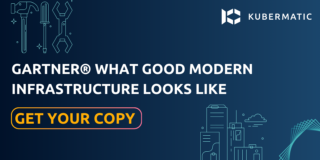


The State of Apps 4: PersistentVolumes and PersistentVolumeClaims
Previously in this series, we looked at volumes and volumeMounts in Kubernetes. Now we’ll take a step further and introduce two other Kubernetes objects related to data persistence and preservation, namely PersistentVolumes (PVs) and PersistentVolumeClaims (PVCs).

Why Implementing Kubernetes Operators Is a Good Idea!
There are so many environments that operational tasks and applications have to be managed in today, it can be a real challenge. Implementing cloud native Operators are a great way to improve efficiencies by providing the tools to automate these processes. In this blog post, you’ll learn more about what Kubernetes Operators are and the benefits of adding them.

Kubernetes Deployments: An Introduction
In the last part of this series, you learnt about ReplicaSet and its functionalities to make the management of Kubernetes applications easier. We will take a step further in this part by introducing you to Kubernetes Deployment.

Kubernetes ReplicaSet: An Introduction
In this part of our series, we are focusing on Kubernetes ReplicaSets. Just like the previous parts, there will be hand-on practice to allow you to get acquainted with the features and functionalities of ReplicaSets which include using ReplicaSet to scale applications up or down.

How to Write Software to Set Up Kubernetes Anywhere
Although Kubernetes is a very complex system, installing it doesn’t have to be hard if you use existing tooling. In this blog post, you’ll get some insights on the learnings we made while creating KubeOne, a Kubernetes cluster lifecycle management tool.

Keeping the State of Apps Part 3: Introduction to ConfigMaps
In this part, we will look at ConfigMaps which is a similar Kubernetes object but differs in use case to Kubernetes Secret. After digging into theory, we will follow up with hands-on practice to test the use case and functionalities of a ConfigMap in Kubernetes.

Kubernetes Metrics – The Complete Guide
Deployments of Kubernetes in production are notoriously massive in scope, running thousands and even tens of thousands of containers. In this blog post, we show you how Kubernetes metrics help you keep track of your containers.

Keeping the State of Apps Part 2: Introduction to Secrets
Kubernetes has an integrated pattern for decoupling configuration from application or container to make it portable and make its management flexible. This inbuilt pattern allows application externalisation, as well as giving the application components autonomy from the container image.

The Kubernetes Dashboard Evolution
In October 2020, the Kubernetes Dashboard officially turned five. As main project maintainers, we barely could believe that so much time has passed since our very first commit to the project.

Kubernetes 1.21 Is Here!
The first Kubernetes release of 2021, Kubernetes 1.21: Power to the Community, is finally here! In this blog post, we’ll highlight the most notable improvements of this release and let you know when and how you can benefit from them as a Kubermatic user.

Bringing Your VMs to Kubernetes With KubeVirt
This article is dedicated to the open source project KubeVirt.io, which allows you to bring your virtual machine workloads to Kubernetes. A second part will explain how to use it with Kubermatic Kubernetes Platform.

Using Kubernetes And GNS3 for Virtual 4G Simulation
This blog post is about how to deploy a virtual 4G stack using GNS3 and Kubernetes. It covers the following:
Open5gs vEPC OAI UE and eNodeB simulator Kubernetes 1.17.3 Calico CNI Vyos Router GNS3 (This is optional, it makes simulations easier) The motivation for this blog post stems from the fact …
